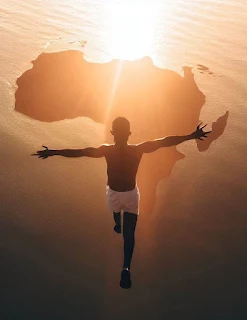Africa Looks Small But is Big, Bold and Beautiful
Africa looks small on the map but is big, bold, and beautiful in real life.
You may have seen Africa appear small on a map, but it's a vast, vibrant, and awe-inspiring continent. Its beauty and richness cannot be fully captured by a flat image on a piece of paper. In Africa, cultures, landscapes, and wildlife come together to create a unique and unforgettable experience. Don't let its size fool you; Africa is truly a marvel you must witness.
The perception of Africa appearing smaller on maps is primarily because the Earth is not perfectly flat but curved. Creating a perfectly accurate representation of the Earth's curved surface on a flat map is mathematically impossible; therefore, it is widely known that all map projections tend to inaccurately depict Africa as smaller in size compared to the other continents.
Maps, being two-dimensional representations of the three-dimensional Earth, naturally face challenges in accurately representing the curved surface. Mexico, China, Europe, India, The USA, and Japan can almost comfortably fit into Africa's total land area. Africa is 11.68 million square miles or 30.22 million square kilometers and covers 20.4 percent of the total land area on Earth.
Comparing Land Areas: Africa and Other Regions
Africa is indeed a vast continent, covering a significant portion of the Earth's land area. It is the second-largest continent, after Asia, both in terms of land area and population.
Let's examine the land areas of the countries and regions mentioned:
Mexico: Approximately 1.96 million square kilometers
China: Approximately 9.59 million square kilometers
Europe: Approximately 10.18 million square kilometers
India: Approximately 3.29 million square kilometers
USA: Approximately 9.63 million square kilometers, including Alaska and Hawaii
Japan: Approximately 377,975 square kilometers
When we add up the land areas of these countries and regions, we get a total of approximately 34.99 million square kilometers; the land area of Africa is 30.2 million square kilometers. To illustrate the size of 4.7 million square kilometers, it is roughly equivalent to the land area of the European Union, which is around 4.47 million square kilometers. Square miles = Square kilometers 0.386102.
Africa Looks Small on the Map But is Big, Bold, and Beautiful.
Have you ever noticed that Africa looks smaller than other continents on maps? Well, it's not because Africa is actually smaller, but rather because of a map distortion called the Mercator projection.
The Mercator projection introduces distortions as they attempt to flatten the Earth onto a flat map. These distortions become more pronounced as you move away from the equator. Since Africa is located closer to the equator, where the curvature of the Earth is less pronounced, it appears smaller in relation to regions closer to the poles when depicted on certain map projections.
The Mercator projection was a popular map for navigation in the 16th century. It accurately preserves angles and shapes but distorts the sizes of land masses near the poles. The Mercator projection maps, despite their distortions, are still widely used, have been in use for centuries, and have become ingrained in popular culture.
Also, the Peters projection, known as the Gall-Peters projection, one of several alternative map projections developed to address the distortions present in traditional projections like the Mercator, has its flaws. As does the Eckert IV Projection, Robinson Projection, and the Winkel Tripel Projection because no map projection can perfectly represent the Earth's curved surface on a flat map. This is why Africa looks small on the map but is big, bold, and beautiful in real life.
Africa is a vast continent with immense natural beauty. From the expansive Sahara Desert in the north to the lush rainforests of Central Africa, and from the iconic savannas of East Africa to the stunning coastlines along the Atlantic and Indian Oceans, Africa showcases a diverse range of landscapes and ecosystems that contribute to its bold and captivating character.
Beyond its physical attributes, Africa's cultural richness, history, and biodiversity make it truly remarkable. The continent is home to over 1.3 billion people and more than 3,000 distinct ethnic groups, each with its unique traditions, languages, and customs.
Africa has extraordinary wildlife, including iconic species like elephants, lions, giraffes, and rhinoceroses. It encompasses magnificent natural wonders such as Victoria Falls, the Serengeti National Park, the Nile River, and the majestic Mount Kilimanjaro. Africa's artistic expressions, music, and cultural heritage further add to its allure, making it a place of immense significance and beauty far beyond its representation on a two-dimensional map.








